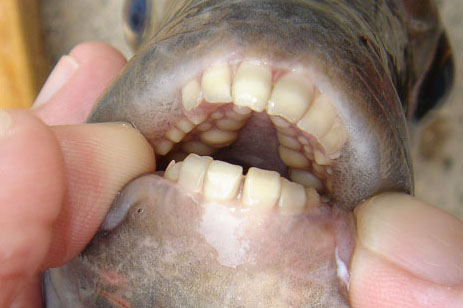Just like cows, fish chew their cod
 Tuesday, May 18, 2010 at 9:59AM
Tuesday, May 18, 2010 at 9:59AM ![]() Baddum-tish! OK, they don't chew their cud, but I can never resist a good pun (although I was seriously considering "Ruminations on the way fish eat" - better?). I just love this new paper by Gintof et al. about how fish chew, mostly because its an idea that I never would have ever considered. Basically, they explored whether fish just bolt their food, like lizards and snakes, or whether they engage in "intra-oral prey processing" (= chewing, sometimes sicnetific jargon cracks me up). After looking at several model fish species, they conclude that yes, fish chew, and they chew about as many times as mammals do. Its not like mammal chewing (especially herbivores) in that there is little side-to-side motion, but its rhythmic, and thats the most important thing. This means that the bolting of food by lizards and snakes represents evolutionary loss of chewing, or that the model fish and all mammals both evolved chewing separately (they call this convergent evolution).
Baddum-tish! OK, they don't chew their cud, but I can never resist a good pun (although I was seriously considering "Ruminations on the way fish eat" - better?). I just love this new paper by Gintof et al. about how fish chew, mostly because its an idea that I never would have ever considered. Basically, they explored whether fish just bolt their food, like lizards and snakes, or whether they engage in "intra-oral prey processing" (= chewing, sometimes sicnetific jargon cracks me up). After looking at several model fish species, they conclude that yes, fish chew, and they chew about as many times as mammals do. Its not like mammal chewing (especially herbivores) in that there is little side-to-side motion, but its rhythmic, and thats the most important thing. This means that the bolting of food by lizards and snakes represents evolutionary loss of chewing, or that the model fish and all mammals both evolved chewing separately (they call this convergent evolution).
Its a fun paper, you can read it here:
Gintof C, Konow N, Ross CF, and Sanford CP (2010). Rhythmic chewing with oral jaws in teleost fishes: a comparison with amniotes. The Journal of experimental biology, 213 (Pt 11), 1868-75 PMID: 20472774


